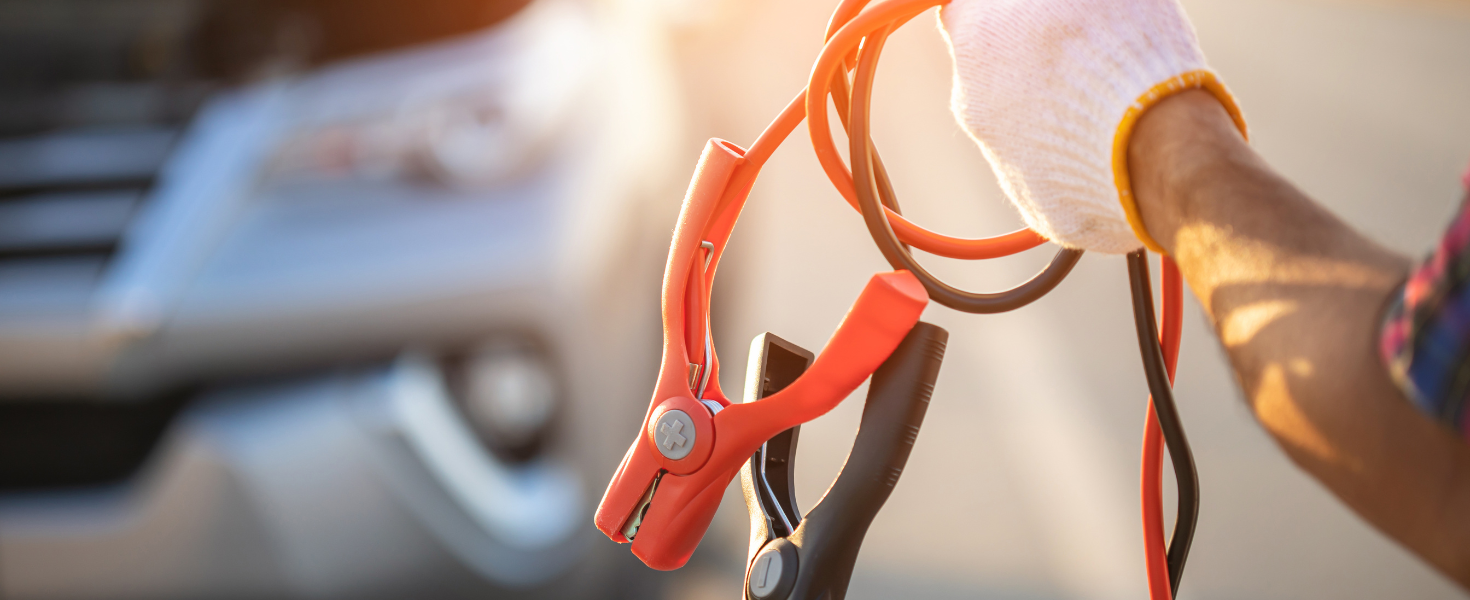How to Use Jumper Cables
Precautions, jump-starting a car, and key features of portable jump starters


Dead batteries are an inconvenience at best—and at worst they can leave you stranded and waiting for help in dangerous conditions. Jumper cables are standard issue in nearly any roadside assistance kit you can buy because they're one of the most useful items to have in your car.
In this article, we'll take a look at how to connect jumper cables, how to use jumper cables, and other ways to jump a vehicle when another car isn't available.
How do jumper cables work?
Jumper cables or booster cables work by transferring electricity from an energy source to a dead battery. Most often, they are connected between a car with a working battery and car that won't start because of a dead battery. Jumper cables can, however, be attached to portable chargers, or any other appropriate source of electricity, in order to charge batteries.
Precautions to take when using jumper cables
When it comes to how to jump start a car with cables, there are some important things to keep in mind to prevent damage to both the dead battery and the live battery.
- Check for Similar Voltages—Make sure that the two batteries have similar voltages. Drastically uneven voltages could damage a vehicle's electrical system.
- Pay Attention—Matching the clips to their appropriate charges (positive or negative) is crucial, but the order in which you make the connections is also important. Improper connections can lead to sparks flying in an oily engine compartment, which is dangerous.
- Inspect for Damage—Jumper cables tend to spend a majority of their life bumping around in the trunk. Before using your jumper cables, make sure the cables aren't frayed and that the clips are free from rust.
.png)
How to use jumper cables
Below is a step-by-step guide to properly connecting and jump starting a dead battery using another vehicle. Always remember the precautions listed above. To reduce the chance of accidents, be sure your vehicles are parked in a safe, out-of-the-way location. Also, be sure the vehicles are not touching.
Step 1: Connect the Positive (+) Cable
Start by connecting the red positive clamp to the positive battery post on the dead battery. Connect the other end to the positive battery post on the jumper battery in the working vehicle. Remember to always connect positive to positive.
Step 2: Connect the Negative (-) Cable
Connect the black negative clamp to the jumper battery in the working vehicle. Move to the nonworking vehicle and find a large, metal component in the engine compartment. Then, connect the final black negative clamp to the metal component. Connecting the negative clamp to the dead battery can lead to sparks flying, which is a fire risk.
Step 3: Start the Working Vehicle
With the cable connection complete, it's time to start the working vehicle. Allow it to idle for five to ten minutes.
Step 4: Start the Nonworking Vehicle
Start the nonworking vehicle. If you're still having difficulty getting the vehicle to start, you may need to let the idling vehicle charge the battery for a longer period of time. Once the vehicle with the dead battery has started, let it run for at least 30 minutes in order to give the alternator ample time to charge the battery.
.png)
How to choose a portable jump starter
Although a bit pricey, portable jump starters are also fantastic resources to have available in your vehicle, should you run into battery problems. These portable power banks are as versatile and varied as any other high-tech product, but they all work in similar ways. Fully charge your portable jump starter at home and keep it in your vehicle, ready to help when you need it.
When choosing a portable jump starter, here are some key features to consider:
- Extra Ways to Connect—Many portable jump starters come equipped with a full range of ports and connection options. Look for USB and USB-C ports, as well as 12V outlets, as these can help charge a range of devices on the go, not just your dead car battery.
- Air Compressors—Some portable chargers also come equipped with air compressors to help you inflate flat tires.
- Emergency Lights—Onboard emergency lights give you great peace of mind if you are stranded at night or in situations where visibility is low.
- Power Rating—Consider the vehicle you plan to use with the portable jump starter. Smaller vehicles with lower-voltage batteries may be able to get by with portable jump starters with lower power, but larger vehicles will require portable jump starters with more power.
